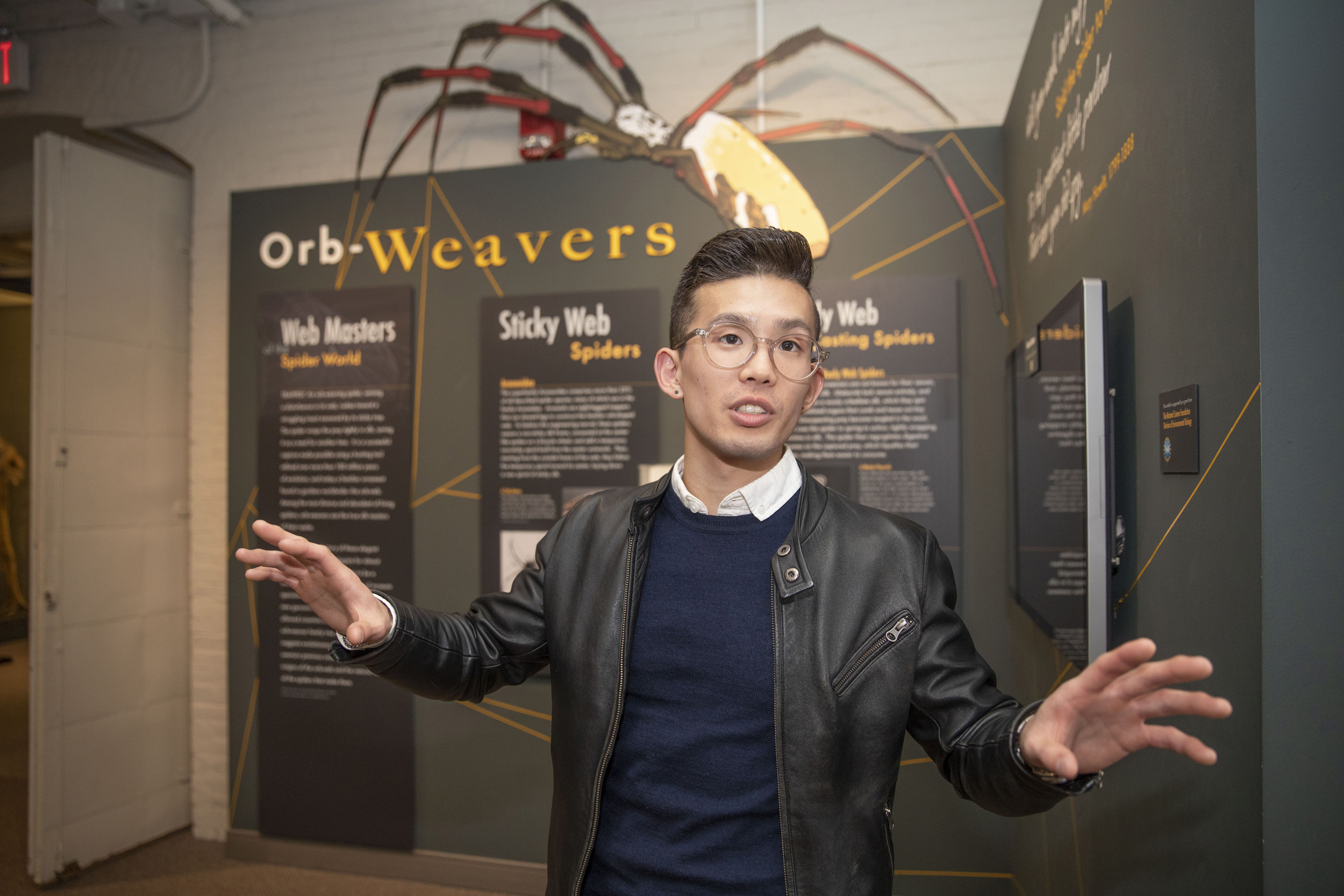
Kris Snibbe/Harvard Staff Photographer
Shoyo Sato’s curious comeback
Early Ph.D. project fell apart, but his scientific drive never failed
This story is part of a series of graduate profiles ahead of Commencement.
Shoyo Sato had a clear idea of his research focus — the social lives of spiders — when he embarked on Ph.D. studies in evolutionary biology. But before long, thanks to the pandemic and other forces beyond his control, the foundation of his project began to crumble.
Then it collapsed.
“In the middle of his Ph.D., he had to completely reconfigure his research,” said Gonzalo Giribet, Sato’s faculty adviser and a biology professor at Harvard. “He’s gone through the most difficulties of any grad students I have ever had.”
Sato persisted, shifting to a new organism — the velvet worm — that he’d briefly worked with when he started in Giribet’s lab. And now, ahead of graduation from the Harvard Kenneth C. Griffin Graduate School of Arts and Sciences, he looks back on the experience as the best thing that could’ve happened.
“This path is better,” Sato said. After starting over, “I just felt relieved. I was way more happy.”
“In the middle of his Ph.D., he had to completely reconfigure his research.”
Gonzalo Giribet, Shoyo Sato’s faculty adviser
Born in Japan and raised in Cambridge, Sato has spent a lot of time around animals that make other people reach for the swatter. From his father, a professional fly tyer, he gained an appreciation for the delicate details of insect life. As a boy, he made weekly visits to the Harvard libraries and the Harvard Museum of Natural History, where he started volunteering at age 12 and soon became known as “the Bug Guy” — people would stop him in the Square and ask if he was the one who brought out all those live specimens at the museum.
“I was just this know-it-all kid,” Sato said with a laugh. In time, as he attempted to really, deeply connect with people and get them excited about insects, his style changed. “[I started] not just spewing information but trying to get people to look at things more closely.”
One day, during a visit to Harvard’s zoological library, Sato lingered over an up-close image of two velvet worms in an old encyclopedia, struck by how beautiful they were. When he first saw a live one, years later, he almost cried. “I think they’re cute,” he said. He’s not alone in this observation. The worms look so much like the beloved CatBus from the animated film “My Neighbor Totoro” that one species is even named in honor of the character.
But they’re not just cute. In the scientific community, most people agree that velvet worms, onychophoran, are pretty weird, evolutionarily speaking. Species range in length from 1 to 15 centimeters. Their nub legs end with a little hook. Some of them lay eggs; others have live births. One fascinating feature is that they shoot sticky slime from their faces to hunt or defend themselves, stopping prey in their tracks so they can mosey up for a meal — or, in the case of a predator, avoid becoming the meal themselves.
As part of his thesis, Sato published the first genome for the worms. This is an important step in understanding the evolution of arthropods, one of the most diverse animal groups on the planet. But Sato’s love for the work — and the worms — is as much about basic human curiosity as it is about scientific achievement.
“Why do we study art? Or why do we look into space?” he said. “It’s exploration; we find these things interesting, so we want to research them.”
The young researcher has created an impressive foundation for studying velvet worms indefinitely, according to Giribet. Perhaps he will, but for now, Sato is focused on his next step: a postdoc at the University of Copenhagen. Whatever his longer-term future holds, he hopes it includes teaching, ideally undergraduates. One of the things he’ll miss most about Harvard is the opportunity to work with students in the field, bringing nature into the classroom and the classroom into nature.
“Those have been some of my favorite experiences,” Sato said. “I like going outside of the classroom, where I’m not just a lecturer. … Being able to show [students] these things that they read about in textbooks in real life has been super rewarding.”
Working with Sato has been no less rewarding for Giribet. Even as he looks forward to seeing how his student will use his gifts to teach the next generation, he is sorry to see him go.
“His personality has made the lab a really happy place for everyone,” he said. “We’re all saying we’re going to miss Shoyo very much.”




